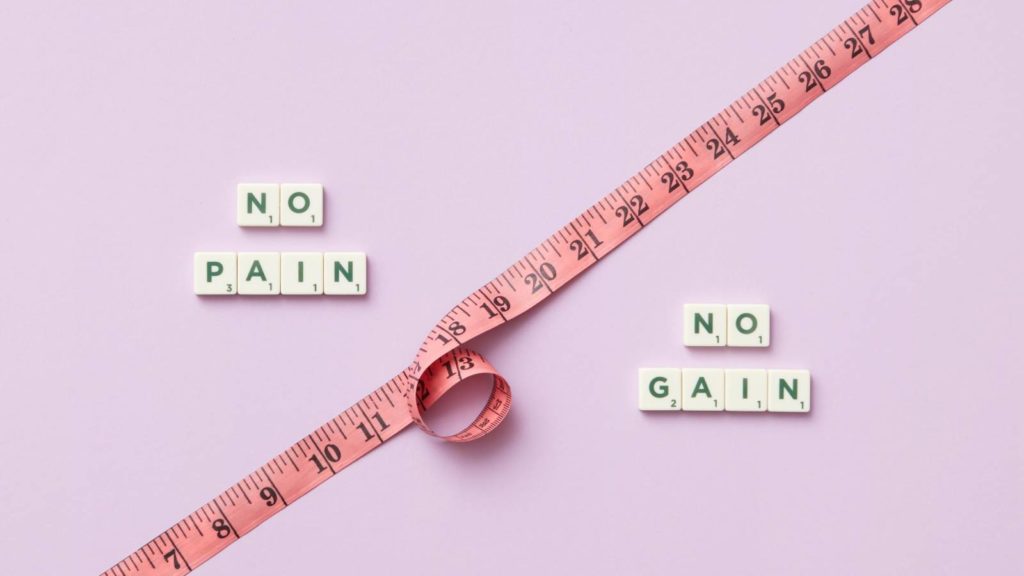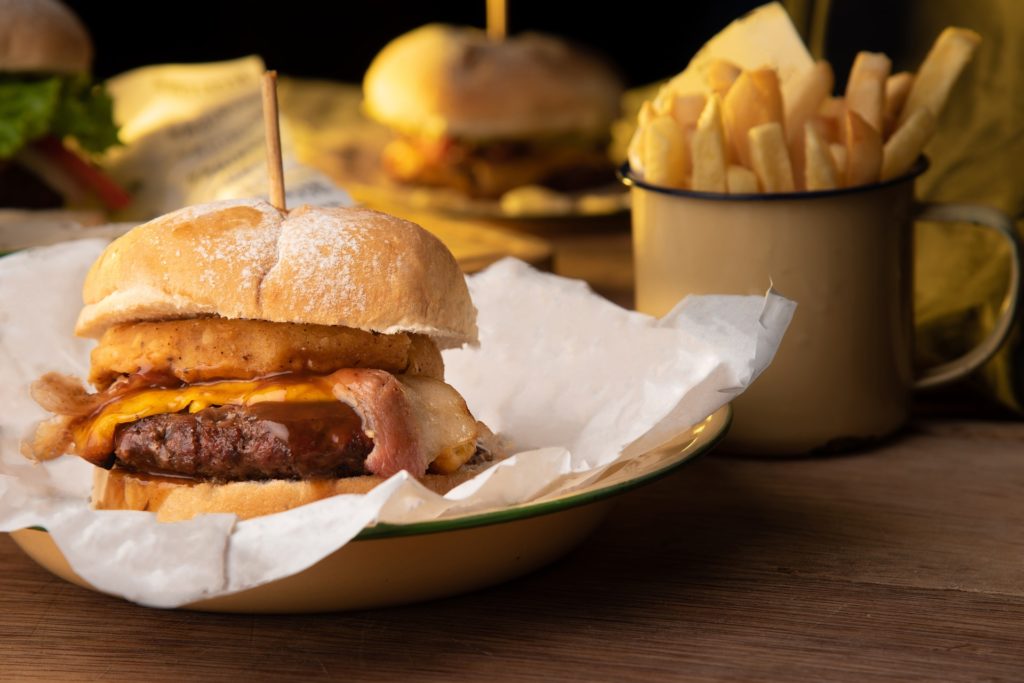An introduction to the science of weight loss

One of the several ways to lose weight is to change your diet. However, the large number of diet programs like (Low Carbohydrate Diets, Intermittent Fasting, Plant-Based Diets etc.) can make it challenging to get started since you are not sure of the most suitable, sustainable and effective one. Some diets aim to curb the appetite to reduce food intake, while others suggest limiting the intake of calories and carbohydrates or fat. Additionally, many offer health benefits that go beyond weight loss.
Essential Things To Know About Weight Loss
Calories in, calories out: Calories are unit measures of energy. Calories are widely used to measure the energy content of food and drinks. “Calories in” means the calories you get from the food you eat, while “calories out” is the number of calories you burn.
How the body uses calories:
- Primary Metabolism: Your body uses most of the calories it gets from food to maintain essential measurements, such as heart rate. This is commonly known as the basal metabolic rate (BMR).
- Digestion: About 10-15% of the calories consumed are used to stimulate digestion. This is known as the heat effect of food (TEF), and it varies depending on the foods you eat.
- Physical Activity: The remaining calories you get from your diet are meant to fuel your physical activity, including workouts and daily activities like walking, reading, and washing dishes.
When the number of calories consumed in food matches the number of calories burned to maintain metabolism, digestion and physical activity, the weight will remain stable.
Therefore, the “calories in versus calories out” model is strictly accurate. You need a calorie deficit to lose weight.
How To Lose Calories

Cutting calories requires a change, but it doesn’t have to be complicated. These changes can have significant effects on how many calories you eat.
Generally, if you reduce 500 to 1,000 calories daily from your typical diet, you will lose about 1 pound (0.45 kilograms) per week.
Save calories by cutting out high-calorie, low-nutrient items.
Skipping one or two high-calorie foods is a good starting point for cutting calories. For example, you can skip the morning milk, the soda for lunch, or that ice cream you always have after dinner.
Swap high-calorie foods for low-calorie options
Swapping calories can make a big difference when it comes to cutting them. For example, you can save about 60 calories per glass by drinking skim milk instead of whole milk. Instead of buying a second slice of pizza, buy fresh fruit. Eat popcorn instead of potato chips.
Reduce serving size
Serving sizes affect how many calories you eat. Doubling the amount of food means doubling the number of calories.
It is normal to underestimate how much you eat, especially if you go out to dinner. Portion control is an excellent way to control calories.
How many calories should be consumed on average?
Women
Active women who walk more than 3 miles daily will need to eat 2,200 calories or more daily to manage their weight and at least 1,700 calories to lose 1 pound (0.45 kg) of weight weekly.
Young women in their twenties have a higher calorie requirement. They require around 2,200 calories a day to maintain their weight.
Women over 50 generally need fewer calories. An average woman over 50 needs around 1,800 calories to maintain her weight and 1,300 calories daily to lose 1 pound (0.45 kg) weekly.
Men
An average man between the ages of 26 and 45 needs 2,600 calories daily to maintain his weight and 2,100 calories daily to lose 1 pound (0.45 kg) weekly.
Men who walk more than 3 miles daily can require 2,800 to 3,000 calories per day to manage their weight and 2,300 to 2,500 calories daily to lose 1 pound (0.45 kg)of weight weekly.
Young men between the age range of 19 and 25 have a higher energy requirement. They need an average of 2,800 calories per day to maintain their weight and up to 3,000 if they are active. To get rid of 1 pound (0.45 kg) weekly, moderately active young men would need to consume between 2,300 and 2,500 calories per day.
The energy requirement decreases with age. Between the ages of 46 and 65, moderately active men need an average of 2,400 calories per day. After 66 years, the average man’s caloric needs drop to around 2,200 calories per day.
Ways To Stay Full Longer
The following evidence-based diet and lifestyle changes have been shown to help people stay full while losing weight people lose weight.
- Eat more protein: Since proteins require energy to be metabolized, a high-protein diet of about 25-30% of a day’s calories intake can increase the number of calories burned by 80 to 100 calories daily. Eating protein helps you stay full longer and can help you consume fewer calories throughout the day. Protein can also help fight cravings. It can not only help you lose weight, but also prevent or reduce weight recovery.
- Avoid sugary drinks: Your brain doesn’t record liquid calories the same way it records essential calories. For this reason, drinking sugary sodas doesn’t automatically compensate your brain by making you eat small amounts of other things. The harmful effects of sugar extend beyond weight gain. You can have adverse effects on metabolic health and increase the risk of many diseases. Eating fruit, which contains fiber and other essential nutrients, is not associated with the same adverse effects as consuming fruit juices or other sugary drinks.
- Drink more water: A straightforward trick to increase weight loss is to drink more water. Drinking about eight 8-ounce (2-litre) glasses of water a day can burn about 96 more calories. When you drink water, it can be even more critical. Drinking water immediately before meals can help reduce hunger and make you eat fewer calories.
- Exercise and weight lifting: When you consume fewer calories, your body compensates by saving energy, which causes you to burn fewer calories. That’s why long-term calorie restriction can significantly reduce metabolism. When it comes to losing weight, it is crucial to maintain or strengthen muscles in addition to losing fat.
- Reduce your intake of refined carbohydrates: Cutting carbohydrates is a very effective way to lose weight, as it limits your appetite and makes you eat fewer calories. However, you don’t have to eat fewer carbohydrates. Just make sure you’re eating quality, fiber-rich sources of carbohydrates, focusing on whole foods with just one ingredient.
Cardio Vs Weight Lifting: What’s Better To Lose Weight?
Many people who have decided to lose weight are faced with a difficult question: Should they do cardio or lift weights?
They are the two most popular types of training, but it can be challenging to know what is the best use of your time.
Cardio burns more calories per session:
- If you weigh 160.937 pounds, you will burn around 250 calories every 30 minutes of jogging at a moderate pace (between 3mph and 4mph).
- If you run faster than 6 miles per hour, you would burn about 365 calories in 30 minutes.
By the way, if you train with weights for the same amount of time, you can only burn 130-220 calories. In general, you will burn more calories per cardio session than weight training with about the same amount of effort.
While weight training doesn’t typically burn as many calories as cardio, it has other significant benefits.
The effects in women were minor, with an increase of nearly 4%. While this may sound good, it’s essential to think about how many calories it represents.
So weight training and building some muscle won’t boost your metabolism through the roof, but you can increase it by a small amount.
However, weight training also has other significant benefits for burning calories.
Method Of Losing Weight
Historically, many weight loss diet plans have become popular and then faded over time.
A general rule is that you need to have an energy deficit of about 7,000 calories to lose 1 pound of fat.
A calorie deficit is a situation where you burn more calories than you consume. This means that to lose half a pound, the difference between your basal metabolic rate (the energy you burn just by being there) and your daily energy intake (food) must be 1 pound (0.45 kg) over the week.
A Safe Amount Of Calories To Lose Weekly
There are 7,700 calories in a kilogram, so if you want to lose weight at the rate of one kilogram per week, you should reduce your total calorie consumption by 7,700 calories or 1,100 calories daily.
Conclusion
Strictly from a biological point of view, the “calories in versus calories out” model is essential for weight loss.
Additionally, different foods can affect hormones, metabolism, hunger, and feelings of satiety in different ways, which in turn affects calorie intake.
In practical terms, some foods can help you maintain a healthy weight while optimizing your overall health. Focusing solely on calories can make you miss the big picture.
The number of calories you need per day depends on whether you want to maintain, lose, or gain weight, as well as many other factors, including gender, age, height, current weight, activity level, and metabolic health.
Cutting calories doesn’t mean starving. A few simple diets and lifestyle changes, such as exercising, hydrating correctly.